🐯 GIVE THE GIFT THAT LASTS A LIFETIME 🐯 Honor someone special with a Tiger Brick in Tiger Trails 🐯 GET A BRICK TODAY
Hours are 9 AM - 5 PM daily.
🐯 GIVE THE GIFT THAT LASTS A LIFETIME 🐯 Honor someone special with a Tiger Brick in Tiger Trails 🐯 GET A BRICK TODAY
Hours are 9 AM - 5 PM daily.
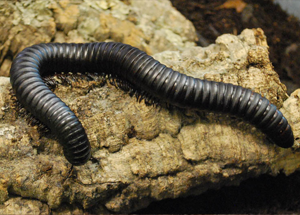 COMMON NAME: Giant African Millipede
COMMON NAME: Giant African Millipede
SCIENTIFIC NAME: Archispirostreptus gigas
TYPE: Invertebrate
DIET: Detritivore – feeds on decaying organic matter, such as rotting leaves and wood
GROUP NAME: Colony (though they are typically solitary)
LIFESPAN: 7–10 years in captivity
SIZE: Up to 12 inches (30 cm) long
WEIGHT: ~3–4 oz (85–115 g)
STATUS: Not Evaluated
THREATS: Habitat destruction and improper collection for the pet trade
HABITAT: Subtropical forests and leaf litter of western and central Africa
BEHAVIOR:
Navigates without eyes by using sensitive antennae
Has weak mouthparts and cannot bite
Defends itself by curling into a tight spiral and secreting a foul-smelling fluid
FUN FACT: Millipedes breathe through tiny holes called spiracles located along the sides of their exoskeleton—and they have two pairs of legs per body segment, unlike centipedes!
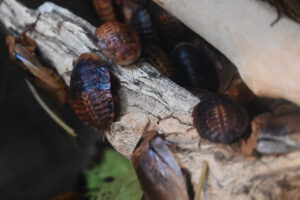 COMMON NAME: Peppered Cockroach
COMMON NAME: Peppered Cockroach
SCIENTIFIC NAME: Archimandrita tesselata
TYPE: Invertebrate
DIET: Leaves and decaying plant material (omnivore)
GROUP NAME: Intrusion (rarely used; often just called a colony or group)
LIFESPAN: Up to 2 years
SIZE: 2–3 inches
WEIGHT: Not well documented; very light due to exoskeleton and body design
STATUS: Not Listed
THREATS: None (in captivity); habitat loss in the wild is a minor concern
HABITAT: Tropical rainforests of Central and South America
BEHAVIOR: Docile and usually calm. While not the longest of roaches, they are among the widest. Often hide during the day and come out at night.
ORDER: Blattodea (not Phasmatodea — that’s for walking sticks)
FUN FACT: These cockroaches are closely related to some of Earth’s earliest winged insects, which lived over 200 million years ago—making them ancient survivors of the insect world!
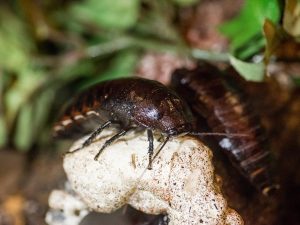 COMMON NAME: Madagascar Hissing Cockroach
COMMON NAME: Madagascar Hissing Cockroach
SCIENTIFIC NAME: Gromphadorhina portentosa
TYPE: Invertebrate
DIET: Detritivore – feeds on decaying organic matter like rotting leaves, wood, and fruit
GROUP NAME: Colony (commonly lives in groups in captivity and the wild)
LIFESPAN: 2–5 years
SIZE: 2–4 inches (5–10 cm)
WEIGHT: ~15–20 grams
STATUS: Not Evaluated
THREATS: None in the wild; common in captivity
HABITAT: Forest floors of Madagascar, often under logs and leaf litter
BEHAVIOR: Nocturnal scavenger that contributes to forest health by breaking down decomposing materials.
FUN FACT: These cockroaches hiss by forcing air through spiracles (tiny holes along their sides), a behavior used to communicate during mating or when threatened.
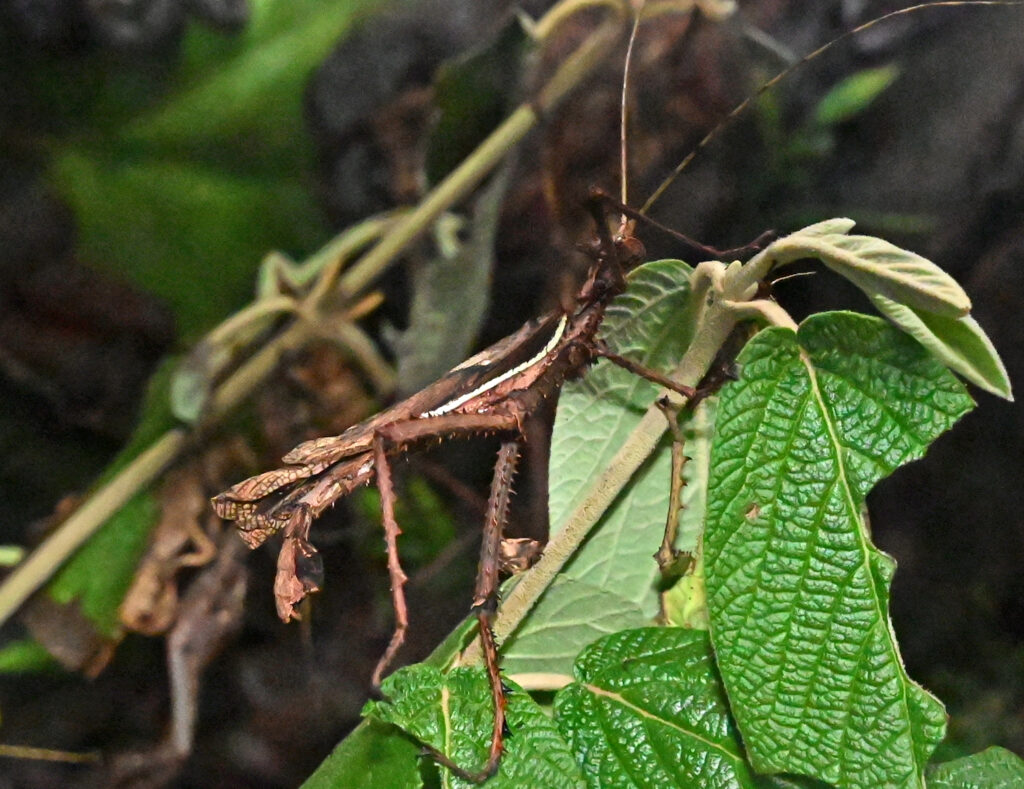
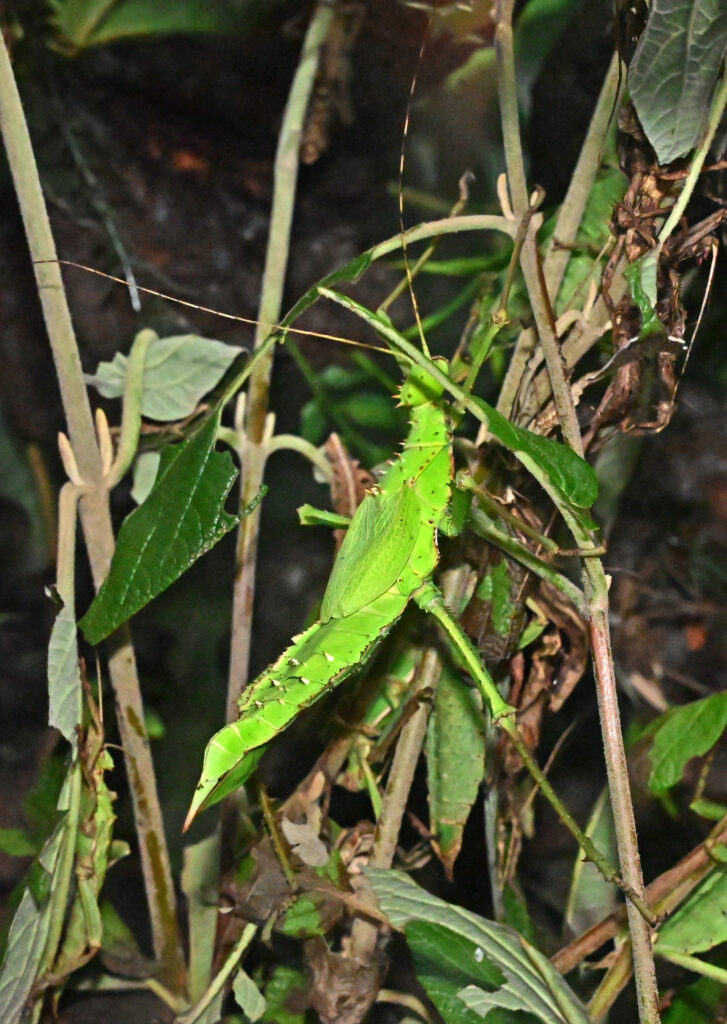
COMMON NAME: Jungle Nymph
SCIENTIFIC NAME: Heteropteryx dilatata
TYPE: Invertebrate
DIET: Herbivore – feeds on leaves, including guava, bramble, and other tropical plants
GROUP NAME: Colony (though they are mostly solitary)
LIFESPAN: 1–2 years
SIZE:
Females: Up to 6.5 inches (16.5 cm)
Males: 4–5 inches (10–13 cm)
WEIGHT: Females can weigh up to 65 grams – among the heaviest of all insects
STATUS: Not Evaluated
THREATS: Habitat loss and collection for the pet trade
HABITAT: Tropical rainforests of Southeast Asia, especially Malaysia
BEHAVIOR: Nocturnal and well-camouflaged. Females are leaf-like and bright green; males are brown and stick-like. Females have short wings and cannot fly, while males can.
FUN FACT: Jungle Nymphs are covered in sharp spines. When threatened, females raise their hind legs and snap them shut like a spiny trap to deter predators!
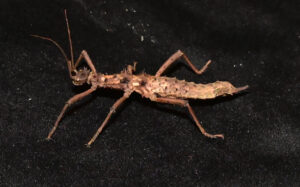
COMMON NAME: Sabah Thorny Stick Insect
SCIENTIFIC NAME: Aretaon asperrimus
TYPE: Invertebrate
DIET: Herbivore – feeds on leaves of bramble, guava, and other tropical plants
GROUP NAME: Colony (though typically solitary)
LIFESPAN: 9 months to 1.5 years
SIZE:
Male: ~2 inches (5 cm)
Female: 3–3.5 inches (7.5–9 cm)
WEIGHT: Not well documented; relatively lightweight
STATUS: Not Listed
THREATS: None significant in captivity
HABITAT: Tropical rainforests of Borneo, particularly the Sabah region of Malaysia
BEHAVIOR: Nocturnal and slow-moving. Covered in small spines for camouflage and defense.
FUN FACT: When threatened, these insects release a repulsive odor and may produce a faint croaking sound by rubbing their mouthparts together!
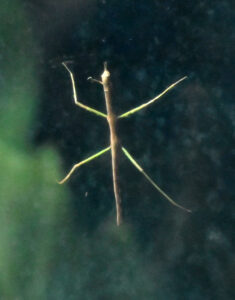
COMMON NAME: Vietnamese Walking Stick
SCIENTIFIC NAME: Baculum extradentatum
TYPE: Invertebrate
DIET: Herbivore – eats leaves; uses sideways-moving jaws
GROUP NAME: Colony (typically solitary)
LIFESPAN: 1–2 years
SIZE:
Females: 4–5 in
Males: 3–4 in (rare)
WEIGHT: Lightweight
STATUS: Not Evaluated
THREATS: None significant
HABITAT: Tropical forests of Southeast Asia
BEHAVIOR: Camouflages as twigs; females can reproduce without mating
FUN FACT: Also called phasmids—from the Latin for “ghost” due to their stealthy, vanishing appearance.
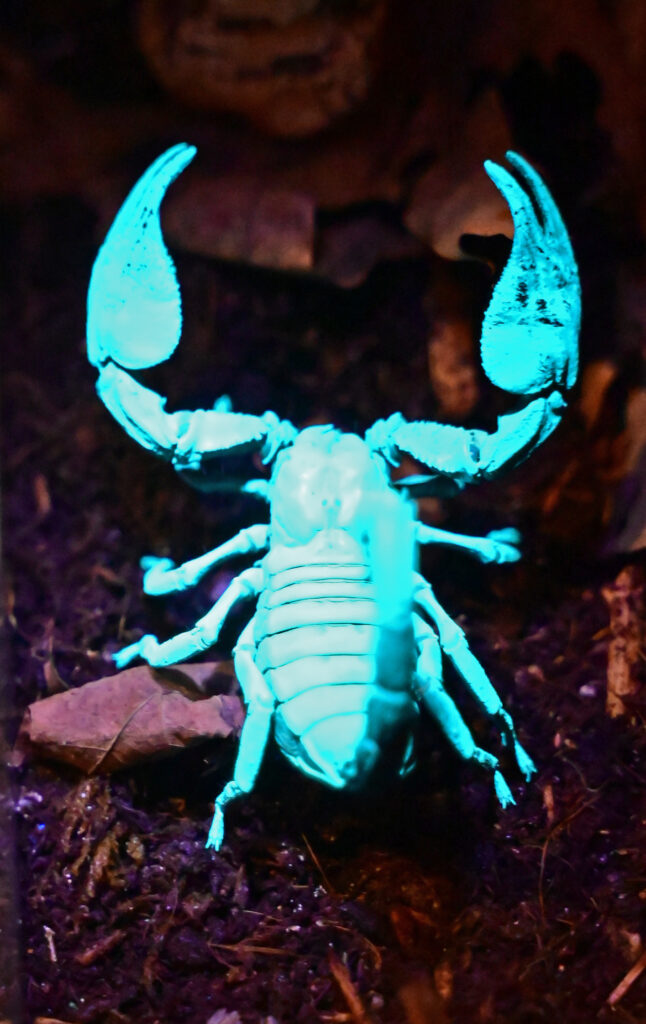 COMMON NAME: Asian Forest Scorpion
COMMON NAME: Asian Forest Scorpion
SCIENTIFIC NAME: Heterometrus spp.
TYPE: Invertebrate
DIET: Carnivore – feeds on insects, spiders, and other small invertebrates
GROUP NAME: Cluster or bed (though typically solitary)
LIFESPAN: 6–8 years
SIZE: 4–6 inches (10–15 cm)
WEIGHT: ~10–12 grams
STATUS: Not Evaluated
THREATS: Habitat loss and collection for pet trade
HABITAT: Tropical and subtropical forests across Southeast Asia
BEHAVIOR: Nocturnal ambush predator that hides in burrows or under logs. Uses powerful pincers to grasp prey and a mild venom to subdue it.
FUN FACT: Like many scorpions, Asian Forest Scorpions glow under ultraviolet light due to natural fluorescence in their exoskeleton—making them light up neon blue-green in the dark!
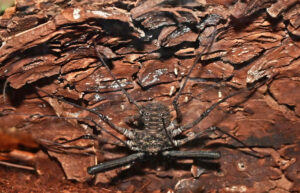 COMMON NAME: Tailless Whip Scorpion
COMMON NAME: Tailless Whip Scorpion
SCIENTIFIC NAME: Damon diadema
TYPE: Invertebrate
DIET: Insects and other small invertebrates
GROUP NAME: Colony (though usually solitary)
LIFESPAN: 5–10 years
SIZE: Up to 8 inches leg span
WEIGHT: Lightweight; not commonly recorded
STATUS: Not Evaluated
THREATS: Habitat destruction
HABITAT: Humid tropical forests and caves in East Africa
BEHAVIOR: Nocturnal and shy; uses long whip-like front legs to feel surroundings and detect prey. Despite their intimidating look, they are harmless to humans.
FUN FACT: Tailless whip scorpions belong to a group called Amblypygids—they have no venom and don’t sting or bite!
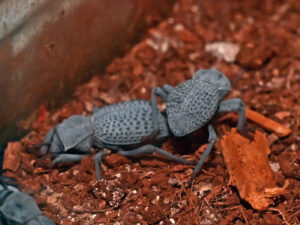 COMMON NAME: Blue Death Feigning Beetle
COMMON NAME: Blue Death Feigning Beetle
SCIENTIFIC NAME: Asbolus verrucosus
TYPE: Invertebrate
DIET: Omnivore – feeds on plant matter, fungi, decaying organic material, and dead insects
GROUP NAME: Colony (though they are typically solitary)
LIFESPAN: 8–10 years in captivity
SIZE: 0.7–1.1 inches (18–28 mm)
WEIGHT: ~1 gram
STATUS: Not Evaluated
THREATS: None significant; not currently threatened
HABITAT: Arid deserts of the southwestern United States, especially the Sonoran Desert
BEHAVIOR: Known for its defense behavior of “playing dead” (thanatosis) when threatened—sometimes staying motionless for hours
FUN FACT: This beetle’s powdery blue color comes from a waxy coating that protects it from dehydration in the desert sun. The blue fades if the beetle gets wet or humid!
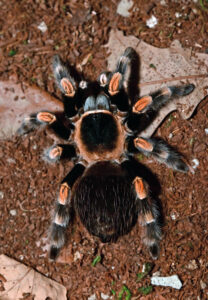 COMMON NAME: Mexican Red-Knee Tarantula
COMMON NAME: Mexican Red-Knee Tarantula
SCIENTIFIC NAME: Brachypelma smithi
TYPE: Invertebrate
DIET: Insects, other spiders, frogs, small birds, and mice
GROUP NAME: Colony (though typically solitary)
LIFESPAN: Males: Up to 10 years
Females: Up to 25 years
SIZE: 5 inches body length; up to 7-inch leg span
WEIGHT: ~0.5–1 oz
STATUS: Near Threatened
THREATS: Habitat destruction and illegal pet trade
HABITAT: Semi-desert and grasslands of Mexico
BEHAVIOR: Nocturnal ambush predators. They are calm but may flick irritating hairs from their abdomen if threatened.
FUN FACT: They can smell and taste with their feet—thanks to sensitive hairs that detect chemical and vibrational signals!
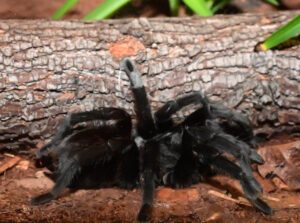 COMMON NAME: Brazilian Black Tarantula
COMMON NAME: Brazilian Black Tarantula
SCIENTIFIC NAME: Grammostola pulchra
TYPE: Invertebrate
DIET: Insects, small invertebrates, and occasionally small vertebrates
GROUP NAME: Colony (though typically solitary)
LIFESPAN: Males: 6–8 years
Females: Up to 20 years
SIZE: 5–6 inch leg span
WEIGHT: ~1 oz
STATUS: Not Evaluated
THREATS: Habitat loss and over-collection for the pet trade
HABITAT: Grasslands and tropical forests of Brazil and Uruguay
BEHAVIOR: Docile and slow-moving. Known for their calm temperament and reluctance to bite.
FUN FACT: This species’ velvety black appearance and gentle nature make it one of the most popular tarantulas in the pet trade.
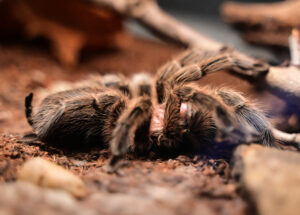 COMMON NAME: Rose-Hair Tarantula
COMMON NAME: Rose-Hair Tarantula
SCIENTIFIC NAME: Grammostola rosea
TYPE: Invertebrate
DIET: Insects, lizards, small snakes, mice, and toads
GROUP NAME: Colony (though typically solitary)
LIFESPAN: Males: 4–6 years
Females: Up to 20 years
SIZE: 4.5–6 inches leg span
WEIGHT: ~0.5–1 oz
STATUS: Not Evaluated
THREATS: Habitat loss and overcollection for pet trade
HABITAT: Deserts and scrublands of Chile, South America
BEHAVIOR: Burrowing tarantulas that web themselves into a shelter during the day
FUN FACT: Despite their dramatic appearance, they’re often shy and slow-moving, making them a favorite in the exotic pet world.
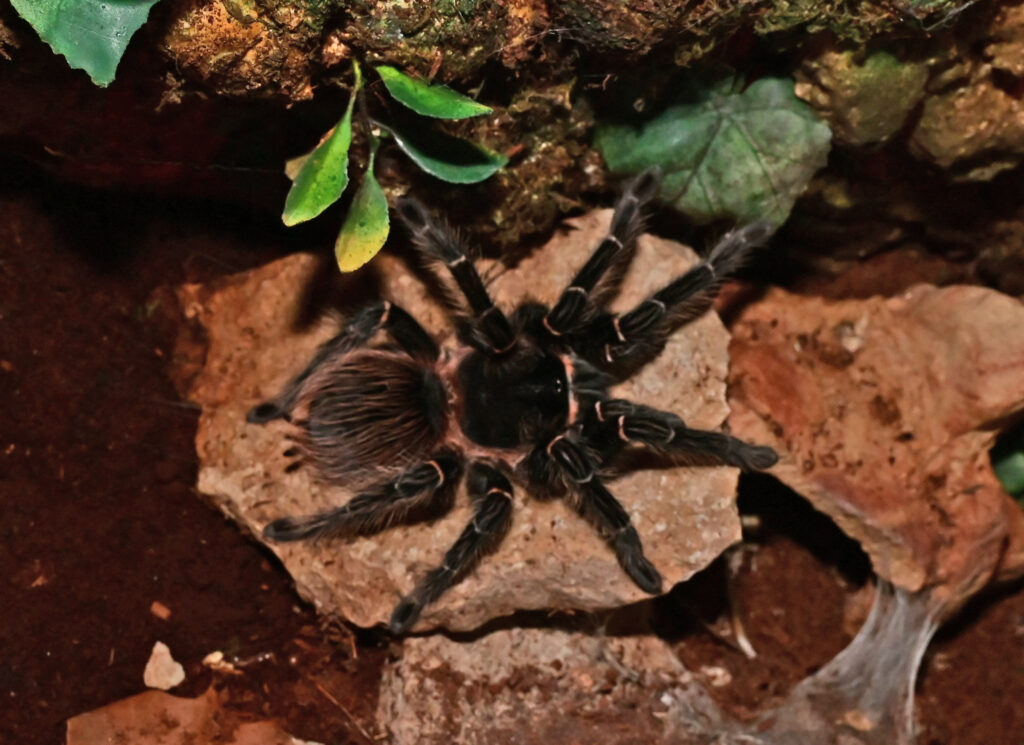

COMMON NAME: Salmon Pink Birdeater Tarantula
SCIENTIFIC NAME: Lasiodora parahybana
TYPE: Invertebrate
DIET: Insects, with the occasional small bird or mammal
GROUP NAME: Colony (though typically solitary)
LIFESPAN: Males: 4–6 years
Females: Up to 15 years
SIZE: Up to 10 inches leg span
WEIGHT: ~3–4 oz
STATUS: Not Evaluated
THREATS: Habitat loss and overcollection for pet trade
HABITAT: Rainforest floors of eastern Brazil
BEHAVIOR: Nocturnal ground-dweller that creates burrows or hides in natural shelters
FUN FACT: One of the largest tarantulas in the world—and despite their size, they’re surprisingly fast movers!
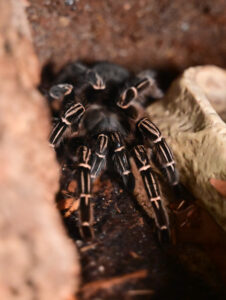 COMMON NAME: Zebra-Legged Tarantula
COMMON NAME: Zebra-Legged Tarantula
SCIENTIFIC NAME: Aphonopelma seemanni
TYPE: Invertebrate
DIET: Insects, small mammals, small amphibians
GROUP NAME: Solitary
LIFESPAN: Up to 15 years (females)
SIZE: 4–6 inches
WEIGHT: Not commonly recorded
STATUS: Not Evaluated
THREATS: Habitat loss
HABITAT: Forests of southern Mexico and Central America
BEHAVIOR: Docile and nervous; more likely to flee than fight. Lives in deep burrows lined with webbing.
FUN FACT: Their striking black and white leg stripes help them blend in with the forest floor.
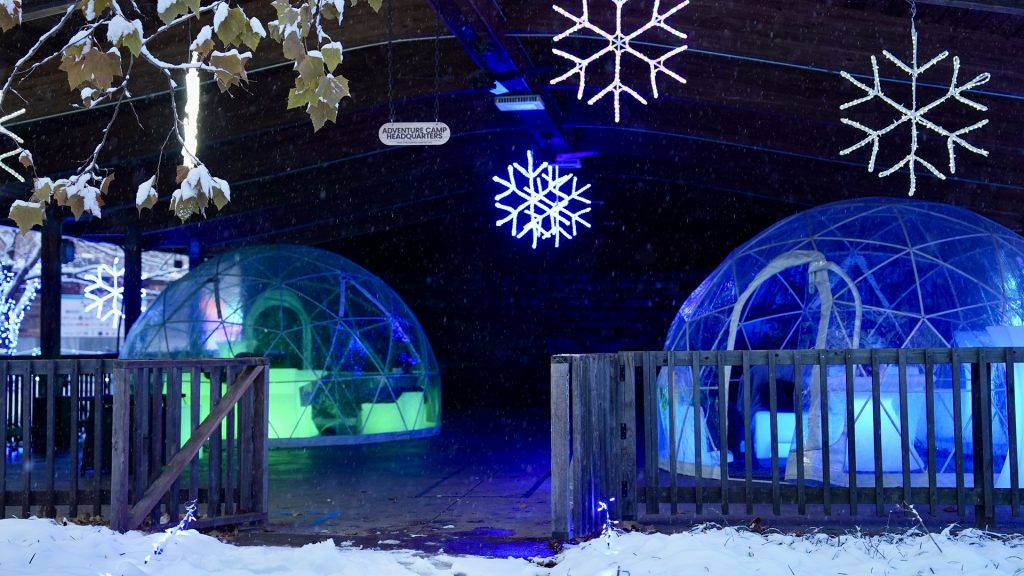

Enjoy Zoo Lights in cozy comfort with a private igloo experience.
Starting on October 2nd, your support will help with animal care, enriching our habitats, and providing unforgettable experiences for our community.
